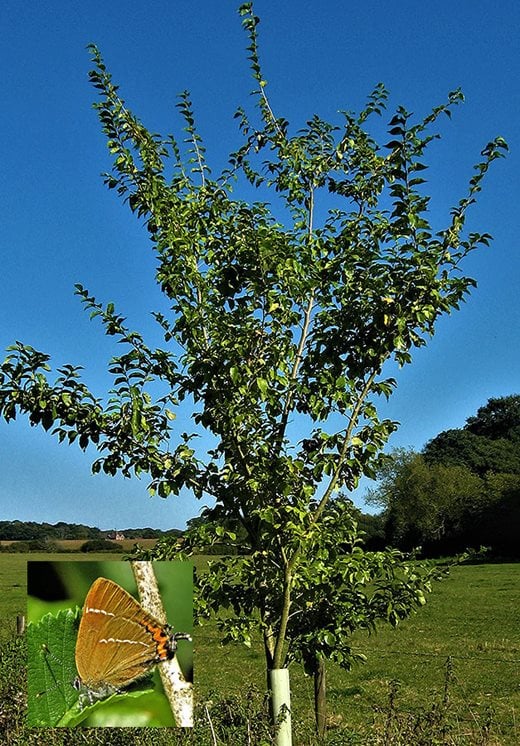This disease-resistant hybrid is the best option to take the place of the lost English elm
Dutch elm disease (DED) all but wiped out one of the most distinctive trees of the British landscape after its arrival from Canada in about 1967. Attempts have been made, over the years, to create a disease resistant variety but with limited success. Now, it looks as if this new hybrid is the answer.

In 1973, in Italy, a breeding programme began at the
Istituto per la Protezione delle Piante in Florence that focused on adding resistant Asian elm species to the elm gene pool.
The programme began by bringing a wider range of species into the breeding work in order to broaden genetic diversity not only to help develop disease resistance to current and developing strains of DED but also to incorporate fast growth, elegant growth habit and suitability as habitat for insects, and in particular the rare White-letter hairstreak butterfly.
‘Wingham’ is the culmination of this work. Up till now ‘Morfeo’, from the same breeding programme, has proved an excellent tree for indifferent soils and micro-climates but, with no European genes, is not going to resemble English elm.
‘Wingham’ brings together blood from three European elms,
U. minor,
U. pumila and
U. x
hollandica ‘Vegeta’, plus the Asian
U. wallichiana. David Herling, a long time elm enthusiast and founder of the
Resistant Elms website, who selected ‘Wingham’ and named it for the Kent village in which he’s been growing it, told me about it.
A tree for the future?
“This new variety of elm is among the most resistant to DED of any of the modern hybrids, its foliage is highly resistant to attack by comparison with other elms.
“On extremely rich soil in Wingham, East Kent, the tree attained 25 foot in 5 years. We don’t yet know the mature shape of ‘Wingham’ but I would guess that it will be very large, and fairly open. Its colour is wonderfully dark, at least as a sapling, so it should be able to add a brooding presence to the landscape. It flowers profusely from an early age, which makes it an ideal host for the White-letter hairstreak butterfly. It will not, however, thrive on poor soils or with exposure, but in Wingham the tree showed what it could do in the ideal situation.”
You can order plants of
Ulmus ‘Wingham’ from
Pippin Trees.
*Please note, the contents of this blog reflect the views of its author and do not constitute an endorsement by the RHS.

